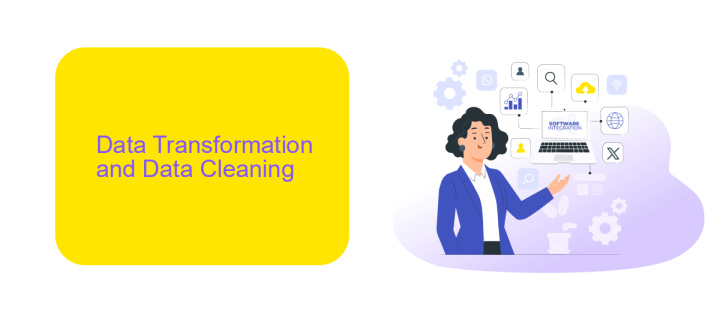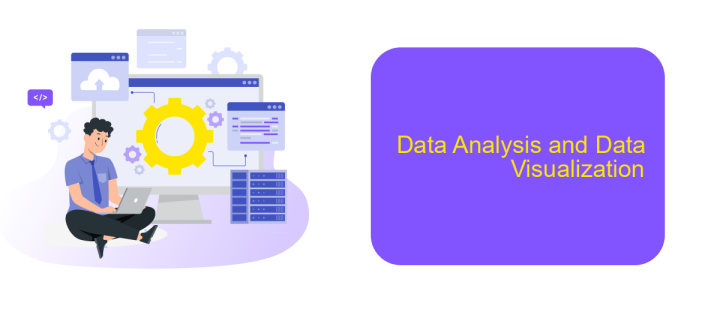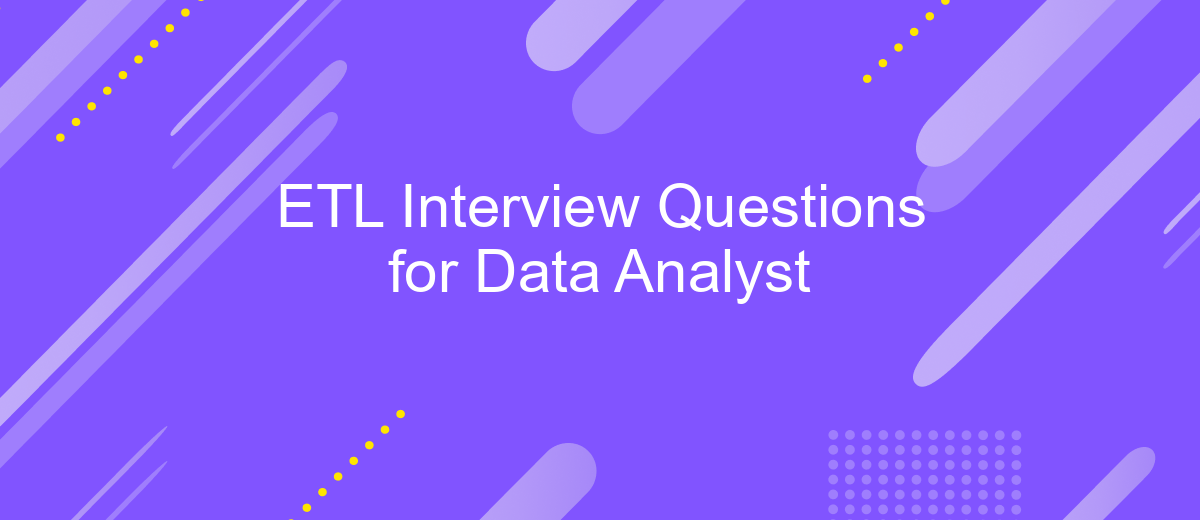ETL Interview Questions for Data Analyst
In today's data-driven world, the role of a Data Analyst is crucial for transforming raw data into actionable insights. ETL (Extract, Transform, Load) processes are fundamental to this transformation. This article delves into essential ETL interview questions, providing aspiring Data Analysts with the knowledge and confidence needed to excel in their interviews and advance their careers.
Data Extraction and Data Gathering
Data extraction and data gathering are critical steps in the ETL process for a data analyst. These steps involve collecting data from various sources, ensuring its accuracy, and preparing it for further transformation and analysis. Effective data extraction can significantly enhance the quality of insights derived from the data.
- Identify Data Sources: Determine the databases, APIs, and other repositories from which data will be extracted.
- Automate Data Extraction: Utilize tools and software to automate the extraction process, reducing manual effort and errors.
- Ensure Data Quality: Validate the data to ensure it is accurate, complete, and free from inconsistencies.
- Use Integration Services: Leverage services like ApiX-Drive to streamline the integration of various data sources, simplifying the extraction process.
By using integration services such as ApiX-Drive, data analysts can automate the data extraction process from multiple sources, ensuring seamless and efficient data gathering. This not only saves time but also enhances the reliability and accuracy of the data collected, providing a solid foundation for subsequent data transformation and analysis.
Data Transformation and Data Cleaning

Data transformation and data cleaning are crucial steps in the ETL process for data analysts. Data transformation involves converting data from one format or structure into another, making it compatible with the target system. This step often includes tasks such as normalizing data, aggregating information, and applying business rules to ensure consistency. Effective data transformation enables better analysis and reporting, providing valuable insights for decision-making processes.
Data cleaning, on the other hand, focuses on identifying and rectifying errors or inconsistencies in the data. This process includes removing duplicate records, correcting inaccuracies, and handling missing values. Tools like ApiX-Drive can facilitate these tasks by automating data integration and transformation workflows, ensuring data quality and reliability. By leveraging such services, data analysts can streamline their ETL processes, leading to more accurate and actionable insights.
Data Loading and Data Warehousing

Data loading and warehousing are critical components of the ETL process for data analysts. Data loading involves transferring data from various sources into a data warehouse, ensuring it is stored in an organized and efficient manner. This process often requires careful planning and execution to maintain data integrity and performance.
- Identify the data sources and determine the format and structure of the data to be loaded.
- Clean and transform the data to ensure consistency and compatibility with the data warehouse schema.
- Use ETL tools or services like ApiX-Drive to automate the data loading process and integrate various data sources seamlessly.
- Monitor the data loading process to detect and resolve any errors or inconsistencies promptly.
- Optimize the data loading process to improve performance and reduce loading times.
Data warehousing involves organizing and storing the loaded data in a central repository, making it accessible for analysis and reporting. A well-designed data warehouse supports efficient querying and data retrieval, enabling data analysts to derive meaningful insights. Utilizing services like ApiX-Drive can streamline the integration and loading processes, ensuring a robust and scalable data warehousing solution.
Data Analysis and Data Visualization

Data analysis is a crucial step in the ETL process, enabling data analysts to derive meaningful insights from raw data. This involves cleaning, transforming, and modeling data to discover useful information, draw conclusions, and support decision-making processes. Effective data analysis requires a thorough understanding of data sources, data quality, and the specific business context.
Data visualization, on the other hand, is the technique of presenting data in a graphical or pictorial format. It helps in making complex data more accessible, understandable, and usable. Visualizations can highlight trends, patterns, and outliers in datasets, making it easier for stakeholders to grasp the insights derived from data analysis.
- Understanding the data sources and their formats
- Data cleaning and preprocessing
- Using tools like Tableau, Power BI, or Python libraries for visualization
- Creating dashboards and reports for stakeholders
Integrating various data sources can be challenging, but services like ApiX-Drive simplify this process by automating data integration and synchronization. This allows data analysts to focus more on analysis and visualization rather than on the technicalities of data integration, thus enhancing productivity and efficiency.
ETL Tools and Technologies
ETL (Extract, Transform, Load) tools and technologies are essential for data analysts to efficiently handle data from various sources, transform it into a usable format, and load it into a target system. Popular ETL tools include Apache NiFi, Talend, and Informatica, which offer robust features for data integration, data quality, and data governance. These tools provide a user-friendly interface and powerful capabilities for automating complex data workflows, ensuring that data is accurate, consistent, and readily available for analysis.
In addition to traditional ETL tools, modern cloud-based solutions like ApiX-Drive are gaining popularity. ApiX-Drive simplifies the integration process by allowing users to connect various applications and services without extensive coding knowledge. This platform supports a wide range of integrations, making it easier for data analysts to automate data extraction, transformation, and loading tasks. By leveraging such tools, organizations can improve their data management efficiency, reduce manual errors, and enhance overall data-driven decision-making processes.
FAQ
What is ETL and why is it important in data analysis?
Can you explain the difference between ETL and ELT?
What are some common challenges faced during the ETL process?
How can automation tools help in the ETL process for a data analyst?
What are some best practices for designing an efficient ETL pipeline?
Do you want to achieve your goals in business, career and life faster and better? Do it with ApiX-Drive – a tool that will remove a significant part of the routine from workflows and free up additional time to achieve your goals. Test the capabilities of Apix-Drive for free – see for yourself the effectiveness of the tool.

